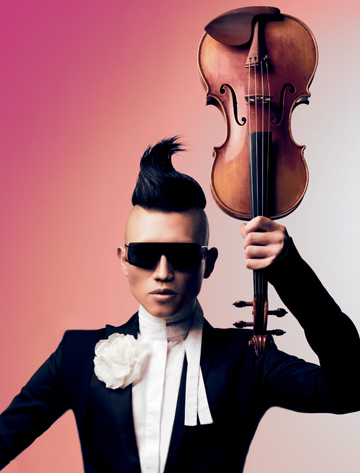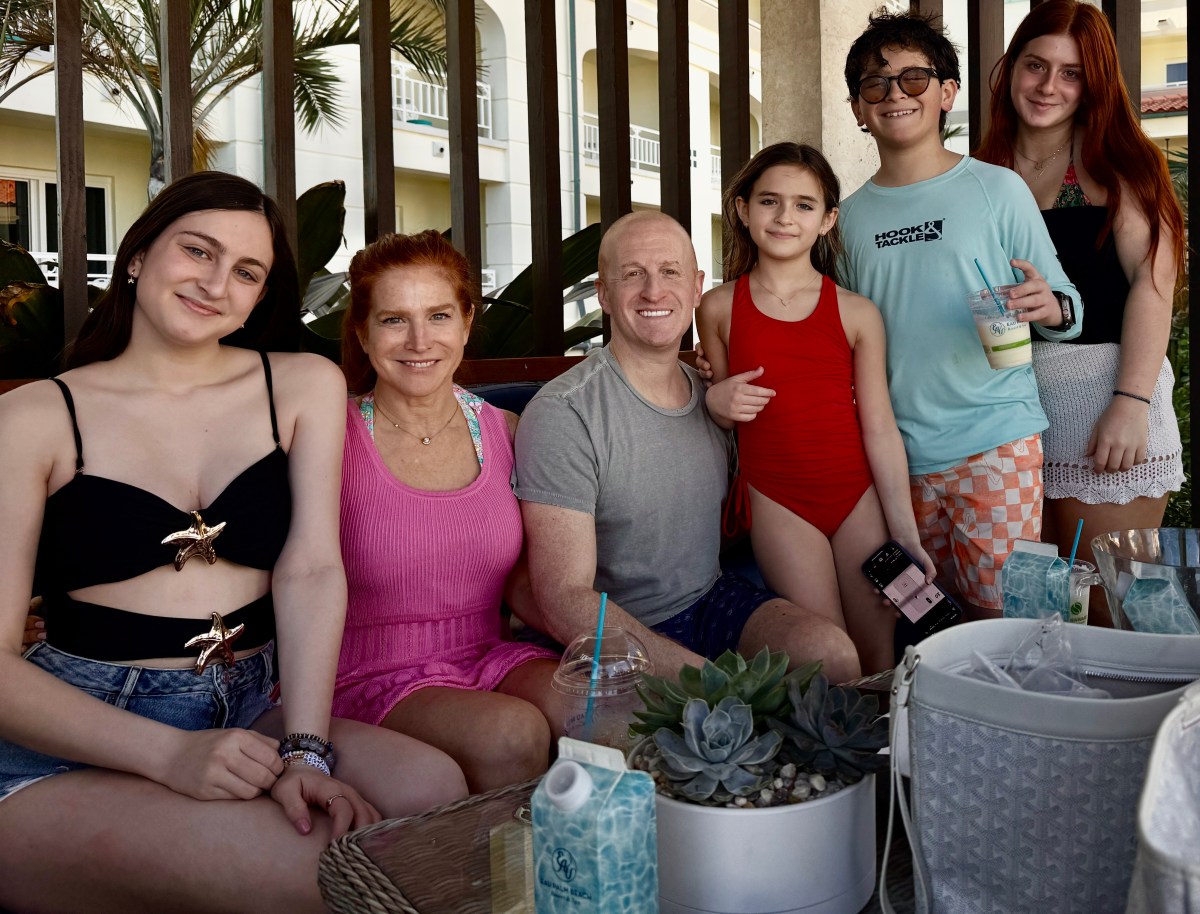Review of Violinist Hahn-Bin

When most people think about a violin virtuoso, they picture a man in a tailcoat courteously bowing and smiling at his audience before assuming a dignified stance and proceeding to dazzle with a fiddle and a bow. Whatever the emotional power of the music played, the typical classical musician tries to communicate mastery, authority and control behind the emotional anonymity of standard concert dress.
Hahn-Bin is anything but your typical classical musician. A youthful protégé of Itzhak Perlman, he has forsaken the traditional performance mode in favor of something quite remarkable. In his appearance at Old Whalers’ Church last Saturday, Hahn-Bin first appeared in something like a kimono and long, black gloves, which he slowly removed while the pianist played introductory music. Hahn-Bin’s hair was done in the manner in which he appears in the photo above. His every move on stage appeared choreographed, and as he began to play the dance continued. His heavily made-up face seemed alternately angry or sad, depending on the mood of the music he was playing. He conveyed mastery of his instrument (and then some!), but he never smiled or acknowledged his audience. The audience, which was more diverse than your usual audience for classical music, ate it up. [expand]
After the opening section of the concert, Hahn-Bin left the stage and soon returned wearing a mottled dress, dark nylons and 6-inch heels. Again, his face remained inexpressive behind his make-up, while the music maintained a slightly nostalgic feeling. At one point, Hahn–Bin dropped to his knees and played in that position for a while. Again, the audience ate it up.
Hahn-Bin’s playing is extremely good, although his musical and interpretive choices tend towards the over-the-top: I’m not sure that there is quite as much col legno (playing with the wood of the bow rather than the hair) or artificial harmonics in the music as he wound up using, and a lot of the repertoire tended to the “greatest hits” variety. I couldn’t help but be reminded of Liberace and his dazzling variations on “Twinkle Twinkle,” although the comparison is most unfair.
In the end, none of that really matters. What’s stunning about Hahn-Bin, and what I think the audience was responding to in his performance, was his successful replacement of the standard role of the classical performer as authoritative master with a cross-dressing, cabaret-style persona who appears to be suffering from some unspecified heartbreak. No longer just an object of reverence and awe, he also inspires something like compassion. Like a ‘70s-era David Bowie, in his make-up and drag, Hahn-Bin seems lost and alone up there. And the audience loved it.
Make no mistake, what Hahn-Bin does is staggeringly difficult to do. In addition to all of his musical skill, he adds studied movement and character, an athleticism and stagecraft that few classical performers could achieve. Indeed, one might wonder how long the 23-year-old Hahn-Bin will be able to keep it up. Playing violin in 6-inch heels!
Much talk has swirled in recent years (decades) about the need for classical music to reach out to young people by adapting strategies from popular music. Hahn-Bin has figured out how to do so in a way that is not trivial or condescending. He doesn’t play arrangements of Radiohead songs. He doesn’t add drums or rap to the standard repertoire. What he does is much more intelligent, inspired and audacious. It’s also a lot harder to do. [/expand]



